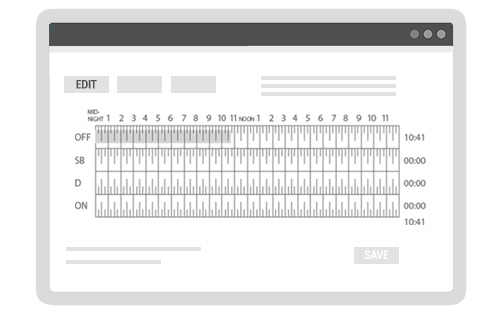
Are Factory-Installed Telematics Devices Right for Your Fleet?
Two major names in truck manufacturing announced a major change to their factory-installed telematics devices: The devices in Mack and Volvo trucks will now pair with certain ELD solutions to provide Hours of Service information, Records of Duty Status and Driver Vehicle Inspection Reports.
This announcement could sway organizations toward these two trucking heavyweights if they need new telematics-equipped vehicles that can function as ELDs.
Still, there are a few considerations to weigh before your business chooses factory-installed telematics devices.
Possible Benefits of Factory-Installed Telematics
Fleet upgrades don’t happen overnight. Imagine the collaboration behind replacing vehicles, especially in larger organizations. The process involves layers of management and a variety of expertise. Fleet procurement can be a years-long effort that ties into major initiatives.
Deciding on a telematics solution for new trucks would add a layer of complicated decision making. Factory-installed options could eliminate that step.
You could also save on installation time. Any vehicle in the yard isn’t out there generating revenue. Preinstalled systems would let you skip taking vehicles out of service.

Fleets with the Most to Gain
If your fleet only uses new trucks with the same make/model, a factory-installed telematics device could be perfect for your needs. Your fleet will be completely matched, right down to its fleet management software.
As for the ELD integrations, fleets using Volvo trucks that are model-year 2015 and newer can benefit. If your fleet is built around late-model Volvo trucks, factory-installed telematics devices might be a good fit.
The Downside of Factory-Installed Telematics Devices
Most fleets include a variety of vehicle year/make/models. The largest delivery fleets span from the latest hybrids to aging diesel trucks. There aren’t many situations where an organization will replace all its vehicles at one time.
The factory-installed option for a mixed fleet means a mix of telematics devices: Your older vehicles might have one brand of aftermarket ELDs, and then you’ll have the vehicles with factory-installed telematics. And that’s a potential source of confusion and inefficiency. Introducing another solution will require additional and unnecessary training for your drivers, dispatchers, mechanics, admins, and managers. They’ll have to be able to switch on the fly between ELD solutions with different interfaces. This could cause problems with maintaining the most-accurate driver logs. Remember, one of the benefits of telematics devices that use ELDs is giving drivers the final say in their logs. If drivers are assigned to different vehicles with mismatched solutions, there’s high potential for user error. You’ll likely have to ask whether having mixed software is right for your business. Is additional confusion worth the convenience of a factory-installed device?
OEM Versus Aftermarket
In the United States, more than 50% of fleets use some sort of mobile resource management (U.S. Mobile Resource Management Systems Market Study, 2019-20 Edition – C.J. Driscoll & Associates). It’s likely that your organization already uses telematics to manage its fleet. Think about whether that solution is serving you well and if you can get that same solution factory installed on your new trucks. If it is serving you well and it isn’t available through the OEMs, it may not be wise to introduce a new provider with unfamiliar customer service and support.

There are also software integrations to consider: Companies that use Enterprise Resource Planning, dispatch, or payroll will need a telematics solution that can pair with their backend systems.
Bottom Line
Factory-installed telematics devices could provide a good opportunity for the right fleet. For the majority, though, aftermarket telematics devices will offer the most commonality, consistency, and flexibility. The point being, you likely have a mixed fleet. Unless you plan to only buy one make/model moving forward, it likely doesn’t make sense to get a factory-installed solution because you could end up with multiple solutions. There isn’t one telematics provider that has relationships will all OEMs.





